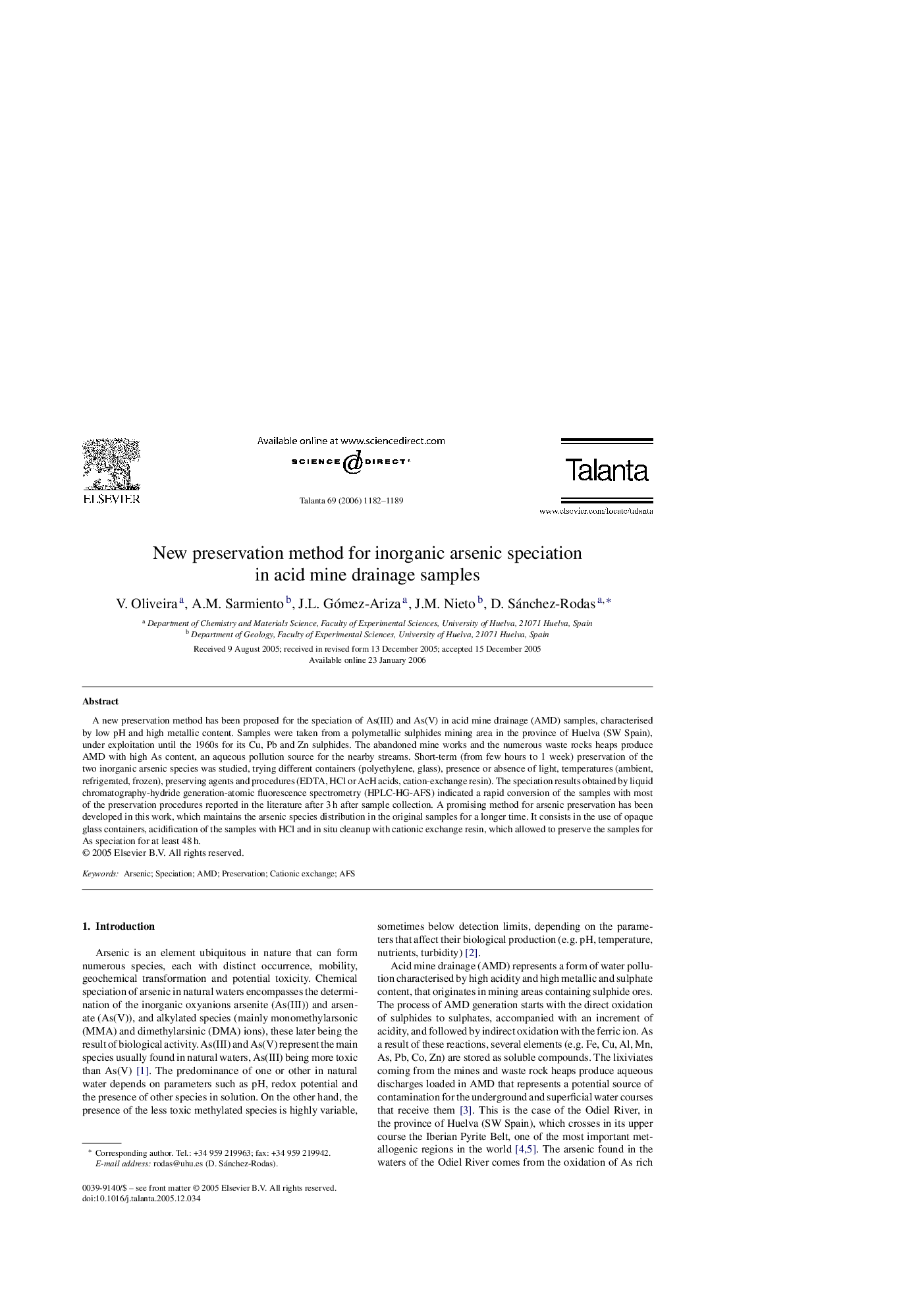| Article ID | Journal | Published Year | Pages | File Type |
|---|---|---|---|---|
| 1245690 | Talanta | 2006 | 8 Pages |
A new preservation method has been proposed for the speciation of As(III) and As(V) in acid mine drainage (AMD) samples, characterised by low pH and high metallic content. Samples were taken from a polymetallic sulphides mining area in the province of Huelva (SW Spain), under exploitation until the 1960s for its Cu, Pb and Zn sulphides. The abandoned mine works and the numerous waste rocks heaps produce AMD with high As content, an aqueous pollution source for the nearby streams. Short-term (from few hours to 1 week) preservation of the two inorganic arsenic species was studied, trying different containers (polyethylene, glass), presence or absence of light, temperatures (ambient, refrigerated, frozen), preserving agents and procedures (EDTA, HCl or AcH acids, cation-exchange resin). The speciation results obtained by liquid chromatography-hydride generation-atomic fluorescence spectrometry (HPLC-HG-AFS) indicated a rapid conversion of the samples with most of the preservation procedures reported in the literature after 3 h after sample collection. A promising method for arsenic preservation has been developed in this work, which maintains the arsenic species distribution in the original samples for a longer time. It consists in the use of opaque glass containers, acidification of the samples with HCl and in situ cleanup with cationic exchange resin, which allowed to preserve the samples for As speciation for at least 48 h.
